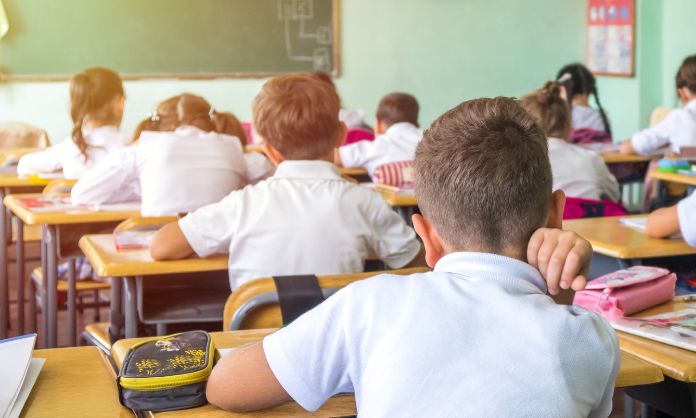
Studies have shown that prolonged periods of sitting can have adverse health effects, from obesity to high blood pressure to increased risk of cardiovascular disease and cancer. Yet we still force young children to sit at desks or tables in school for up to six hours a day.
Many schools have been so focused on improving test scores that they have eliminated recess, forcing children to remain even more sedentary. Researchers are discovering a link between enforced sitting and increases in childhood obesity and an explosion in diagnoses of attention deficit hyperactivity disorder (ADHD). Learn why forcing kids to sit down in classrooms is a bad idea.
Children Need To Move and Play
Movement is necessary to help children develop their vestibular sense. The inner ear regulates the vestibular sense: it gives us balance and a sense of where our bodies are in space relative to the ground. Developing it requires kids to roll around, turn upside down, jump, and play.
Physical play outside is good for kids. It develops social skills (like following the rules of a game or dealing with conflict), muscle strength, and balance. Physical activity improves brain elasticity, which is the brain’s ability to change and adjust based on experience—a critical part of practical learning.
Physical activity also releases endorphins, the “feel good” brain chemicals that help kids relax. Schools are realizing that recess isn’t just a break: it’s an essential aspect of preparing the brain for learning.
Alternatives to Sitting
Any five-year-old will get fidgety if required to “sit still” for extended periods. Many schools have found success by building in hourly five-minute movement breaks, often using entertaining videos that simulate running through a fantasy environment or mimicking movements from popular sports like baseball or soccer.
Other schools have removed desks and chairs altogether, using tables with exercise or yoga balls for sitting. These let kids bounce, and engage core muscles for balance, helping involve the body physically in the learning environment.
The Importance of Sensory Stimulation
Children naturally use all their senses to explore their environments and learn. They develop gross and fine motor skills and the ability to screen out distractions and select which inputs are worthy of their focus.
Kids on the autism spectrum, or those with sensory processing disorders, benefit from sensory rooms where they can learn self-regulation and what strategies work for them in coping with overstimulation. Conversely, kids who need more stimulation and physical activity to engage their brains in learning benefit from sensory rooms that offer crash pads, monkey bars, slides, and dancing games.
Schools are catching on to the benefits of sensory spaces, offering them not just to kids with special needs but all children who need a break and the chance to regroup. Installing a sensory room is just one way to increase movement during the school day. Giving kids more opportunities to move at school makes learning and teaching more accessible and more fun.







